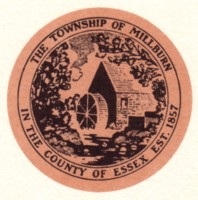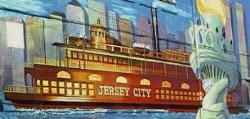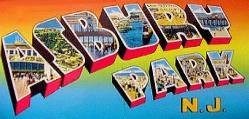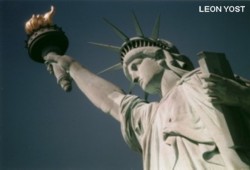 |  |  |
|
| ||
 |  |  |
 |  |  |
|
| ||
 |  |  |
|
|
|
The Mills of Millburn By the Millburn Centennial Committee
Originally appeared in 1957 |
 |
|
|
|
Millburn entered its Industrial Age in the 18th century. The
numerous streams of pure, deep water attracted men to the valley
below the first Watchungs. They knew the power of the rushing
brooks to move their wheels, to grind their meal and flour, to press
the small, wild apples into "cyder," and turn the forests into smooth,
white boards.
Then the time came when a new nation's needs reached out beyond the elemental wants of bread and drink and lumber. Paper was needed for its books, its banknotes, and the records of its commerce. In Wall Street, in New York City, Samuel Campbell, Scottish publisher and printer, shared that need for his growing business, and by his old grant from George III he held legal title to more than 120 acres on Brookside Drive along the abundant water supply of the "Raw Way" River in the northeasterly section of Elizabethtown Borough. In 1790 his mill was in operation turn- ing out paper bearing the watermark of the national emblem of his native land – the Thistle. On the slope across the road from his millpond he built his home and founded his family. By his coming Samuel Campbell set in motion the wheels of an industrial era for his new home town which would dominate its life for more than one hundred years. The Rahway River was dammed in five places between Campbell's Pond and the Fandango Pond to form millponds. Two other mills, Wellington Campbell's, near Short Hills Avenue and Millburn Avenue, and William Smith's, where the high school stadium now stands, were powered by two streams coming down from Short Hills. One stream was the source and outlet for a large pond between Baltusrol Way and Short Hills Avenue; the other stream ran in and out of a pond between the two cemeteries on Millburn Avenue. These two streams eventually flowed into the Cloverleaf Pond surrounding Ocean and other streets, near Main Street, at the Springfield line. Here other mills were located. Another mill, which may have been Reeve's sawmill, stood on the Canoe Brook behind the Poor Farm property, and another mill was located near South Orange Avenue. About 1822 Israel D. Condit came to Millburn and two or three years later became associated with Wooldridge Eaglesfield in the manufacture of paper. In 1826 he married Mr. Eaglesfield's daughter, Caroline. In addition to their paper mill, where among other fine papers, they manufactured paper for the American edition of the Edinburgh Encyclopedia, they began to manufacture felt hat bodies, and eventually the hat mills exceeded the paper mills in number. By mid 19th century eight or nine were in operation. One explanation for the establishment of so many felt hat mills in this vicinity, is that the hatters believed that the mountain spring water contained minerals which made fur soaked in it easily woven. The history of these early mills is a tale of fire and destruction. Somewhere in the history of each, the story appears, "destroyed by fire, rebuilt on site," and often, "again destroyed by fire." Many explanations are given for the gradual disappearance of the mills-new methods of manufacture, particularly the use of steam instead of water power; the gradual lowering of the levels of the streams; the necessity because of sanitary reasons for draining the ponds; new tariff laws; changes in the labor market, particularly the influx of immigrants to the large cities making cheaper labor available elsewhere; the constant menace of breaking mill dams during storms; and finally a growing awareness on the part of all residents of Millburn Township of its desirability as a strictly residential town – some or all of these factors help account for the change from a potential industrial center to a community of homes. Fires were still a constant threat, and in 1906 the big Lighthipe factory burned to the ground and was never rebuilt. Only the Fandango Mill is still in operation. |
|
|
|
|
 Your Ancestors' Story |
 Bruce Springsteen's Jersey Shore Rock Haven! |

|
UrbanTimes.com |